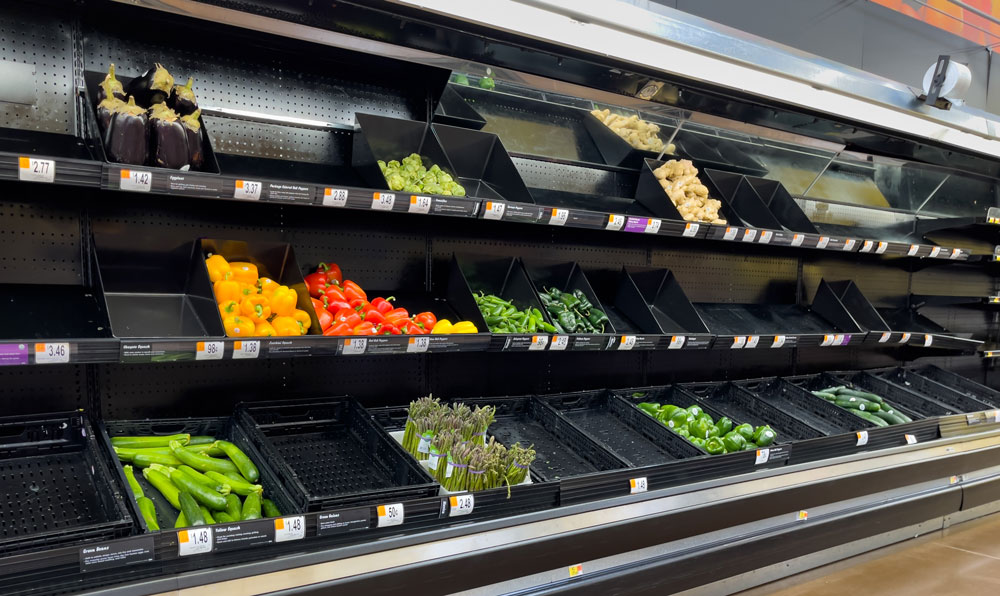Retail is a huge and ever-changing industry, with trends often coming and going in what seems like the blink of an eye. Keeping up can be difficult – but it doesn’t have to be! As we look ahead to 2024, it’s important for retail businesses to be aware of the key trends that are projected to shape industry developments in the years between now and then. With that in mind, numerous experts from respected sources such as Market Research, AllBusiness, Exploding Topics, Rallyware, DevPro Journal, and more have identified several key trends that are set to influence retail business growth over the coming years.
Changes in Retail Over the Last Three Years
The retail sector has experienced a dramatic transformation over the past three years. A major driving force behind this shift has been the COVID-19 pandemic, which fundamentally altered consumer behavior and shopping patterns.
One of the most notable changes has been the accelerated migration towards online shopping. As safety concerns and lockdown measures limited physical store visits, consumers turned to e-commerce platforms. Amazon, for instance, reported a 38% increase in net sales in 2020 compared to the previous year, highlighting the rapid growth of online retail. This trend has necessitated retailers to strengthen their digital presence and invest in robust e-commerce infrastructure.
Simultaneously, the demand for personalized shopping experiences has surged. Consumers are seeking more than just transactional relationships with retailers; they want curated product recommendations, personalized offers, and tailored communication. Retail giants like Alibaba have leveraged big data and AI technology to deliver highly personalized customer experiences, setting a new standard in the industry.
Another significant change is the expectation for faster delivery times. The ‘Amazon Prime effect’ has made two-day shipping the norm, and many consumers now expect even faster, same-day delivery. Retailers like Walmart and Target have responded by investing in their logistics and supply chain capabilities to meet these demands.
Finally, convenience has become paramount in the retail experience. Whether it’s seamless omnichannel shopping experiences, easy returns, or multiple payment options, retailers are finding ways to make shopping as easy and hassle-free as possible.
Outlook for Retail in 2024
As we approach 2024, the retail industry’s landscape is set to undergo significant transformations. The outlook remains promising but is not without its challenges. Retailers must adapt and innovate to stay competitive in an environment defined by the exponential growth of e-commerce, the emergence of omnichannel retailing, and the increasing consumer demand for same-day delivery.
E-commerce continues its upward trajectory, fuelled by technological advancements and changing consumer behaviors. More people are choosing to shop online than ever before, driven by convenience, variety, and the ability to compare prices instantly. This digital revolution presents a wealth of opportunities for retailers to expand their reach and tap into new markets. However, it also means they must constantly innovate to stand out in a crowded online marketplace.
Omnichannel retailing – the seamless integration of physical stores with digital platforms – is another trend shaping the future of retail. Customers today expect a consistent shopping experience across all channels, whether they’re browsing in-store, on a mobile app, or on a website. Retailers who can successfully merge the offline and online worlds will likely be at a competitive advantage.
Finally, the demand for same-day delivery is growing. In an era of instant gratification, consumers increasingly expect their purchases to be delivered immediately. This trend puts pressure on retailers to optimize their supply chains and logistics operations. Simultaneously, it offers a chance to differentiate themselves through superior customer service.
The 6 Biggest Retail Trends of 2024 According to Experts
As we approach 2024, retail experts have identified six key trends projected to shape the industry’s future.
- E-commerce Boom: According to industry experts, the continued expansion of online shopping is a key trend shaping the retail landscape in 2024. With a significant increase in consumers choosing to shop online, retailers are investing heavily in e-commerce platforms. This growth is not just a passing phase but a fundamental shift in the way consumers shop, driven by the convenience and variety offered by online retailers.
- Omnichannel Retailing: The integration of online and offline channels, known as omnichannel retailing, is another major trend. Retail giants like Walmart and Target have been at the forefront of this movement, offering customers a seamless shopping experience whether they’re in-store, on a mobile app, or browsing a website. This strategy not only enhances customer satisfaction but also boosts loyalty and repeat business.
- Recommerce Revolution: Sustainability concerns are driving the recommerce revolution, with the resale of used goods becoming increasingly mainstream. Retailers such as ThredUP and The RealReal have capitalized on this trend, offering consumers a platform to buy and sell pre-owned items. This movement towards more sustainable shopping practices is expected to continue gaining momentum.
- Live Video Shopping: Platforms like TikTok are paving the way for live video shopping, providing an innovative way for retailers to engage with consumers. This interactive shopping experience enables real-time engagement and personalized recommendations, creating a unique and engaging shopping environment.
- Same-Day Delivery: As consumer expectations rise, same-day delivery is becoming the norm rather than the exception. Retailers are under pressure to streamline their fulfillment processes to meet this demand. Companies like Amazon have set the standard with their Prime delivery service, pushing other retailers to follow suit.
- QR Code Payments: The increasing use of QR codes for payments is another notable trend. This contactless and convenient payment option has seen widespread adoption in regions like Asia, and is expected to become more prevalent globally. It offers consumers a quick and easy way to pay, and retailers a streamlined payment process.
In essence, the retail industry in 2024 will be characterized by increased digitization, personalization, speed, and sustainability. As these trends continue to evolve, they will undoubtedly present both opportunities and challenges for retailers worldwide.
Source: The Biggest Retail Trends of 2024 and the Impact of Inflation













